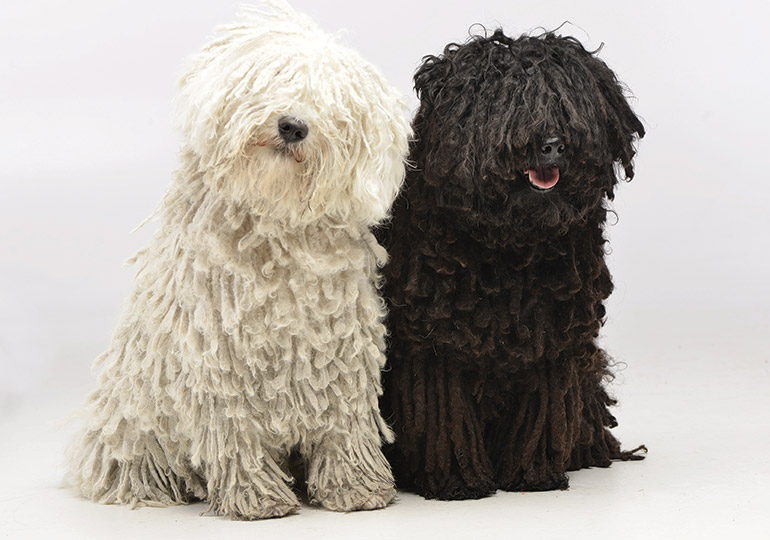Breeds
Puli

GROUP 5 - WORKING DOGS
History
The Puli is believed to have travelled with the nomadic Magyar people as they migrated from Central Asia more than 1000 years ago. This shaggy sheepdog was bred to be the sole companion and workmate of Hungarian shepherds during the long days and months of isolation on the grazing lands of the vast Hungarian plain. Today the Puli is well established and popular in many countries, as well as Hungary, where it is now regarded as a national treasure.
Characteristics
The most obvious characteristic of the Puli is its shaggy coat, which resembles dreadlocks known as cords. The Puli is non-shedding and can be a good option for allergy sufferers. It is a hardy breed with its loyalty and tenacious spirit among its most appealing qualities. An affectionate, intelligent and home loving dog, the Puli makes an ideal companion. He is also suspicious and therefore an excellent watchdog.
Temperament
Its intelligence, trainability and overwhelming desire to please, enables the Puli to learn new tasks rapidly. This makes the breed a good match for most dog sports, including Obedience and Agility training, as well as Flyball and Herding livestock. It is sensibly energetic and loves walks and stimulating games, as well as sitting on the couch with its modern day shepherd. The Puli can have a dominant nature and likes to be top dog. It must learn early to be accepting of other dogs and pets, and the importance of sound temperament cannot be overemphasised.
Appearance
The most striking and distinctive feature of this shaggy dog is its corded coat. The non-shedding coat can reach the ground in four to six years. The Puli is bred in a range of colours including black, rusty black, white, all shades of grey and apricot with or without a black mask. In Australia the most common colour is black. The correct Puli coat consists of a coarse outer coat and a fine, dense, woolly undercoat. The correct balance of outer and undercoat develops into the properly corded coat. Cord types vary considerably from round cords to flatter ribbon cords.
Health and suitability
The Puli has no major health problems, but reputable breeders will screen for Hip Dysplasia and eye abnormalities. The breed’s lifespan is up to 15 years. Being a working breed, the Puli is an active and intelligent dog. Its favourite activities include outdoor pursuits like long walks, trips to the dog park, and most importantly spending time with its human companion. While it doesn’t necessarily need a big backyard, it does need quality time with its family. The breed is suited to all climates and its unusually thick, corded coat helps it withstand extreme weather. It should not be left outside or overworked in hot weather.
Maintenance
At birth, a Puli puppy has a short, wavy, soft coat. As the puppy coat develops, it becomes progressively thicker. At eight weeks, a Puli pup looks like a ball of fluff. From six months to 12 months, the cords become more pronounced, dense and harsher, and the mats of undercoat may require some splitting. The coat requires a regular maintenance routine including bathing and drying, the main grooming is by hand. A fully corded adult coat may take quite some time to dry naturally.
Words: Royson Valore
Image: Shutterstock.com
In Conclusion
Now you know a little about the Puli you may have think that this is the dog for you. Before you make a decision, please make contact with the breed club or your State controlling body for purebred dogs. They will be able to give you information about available puppies and also suggest dog shows where you can see the breed and speak to breeders. In this way you will gain a better perspective of the Puli and its needs and whether this breed would suit your lifestyle.


